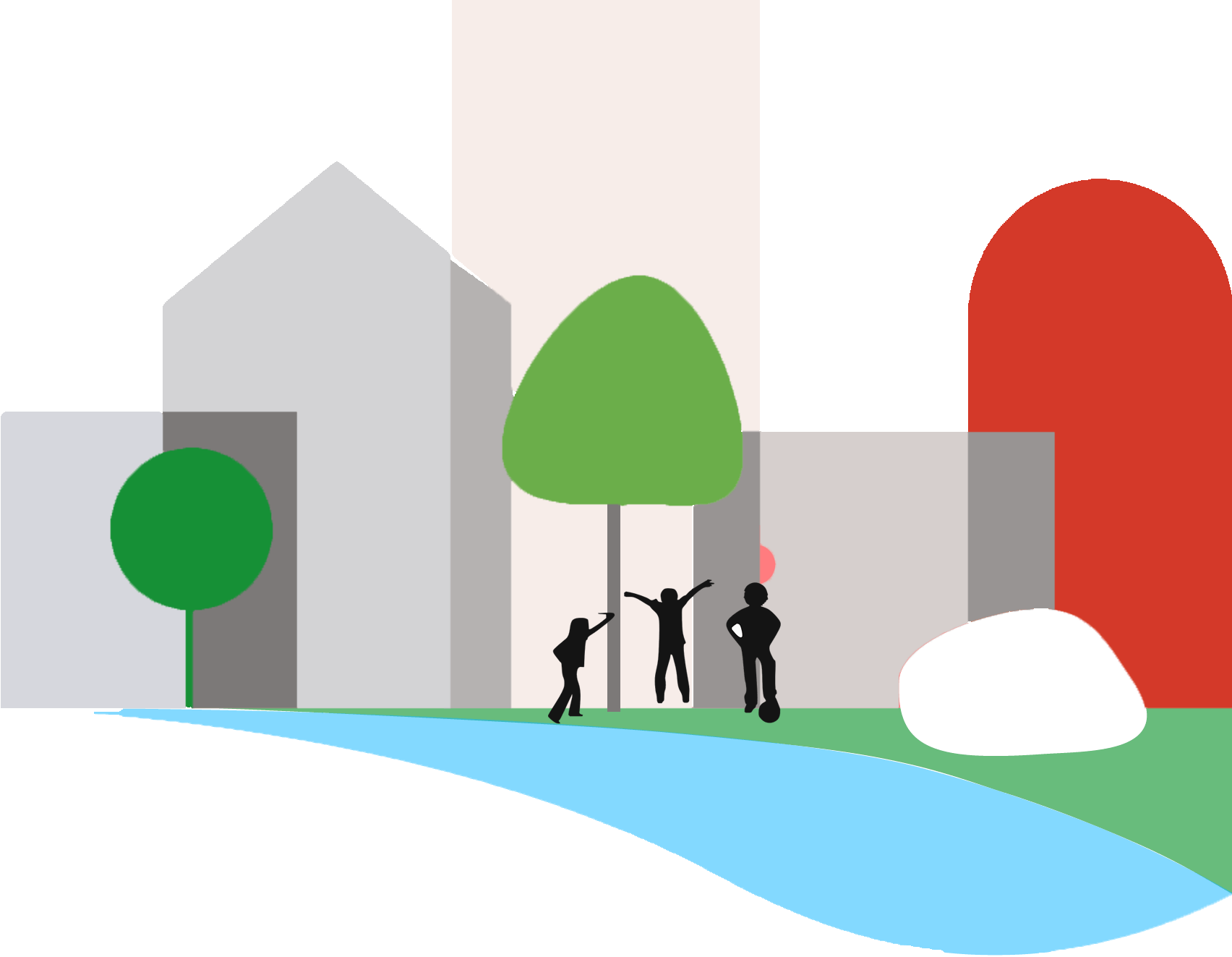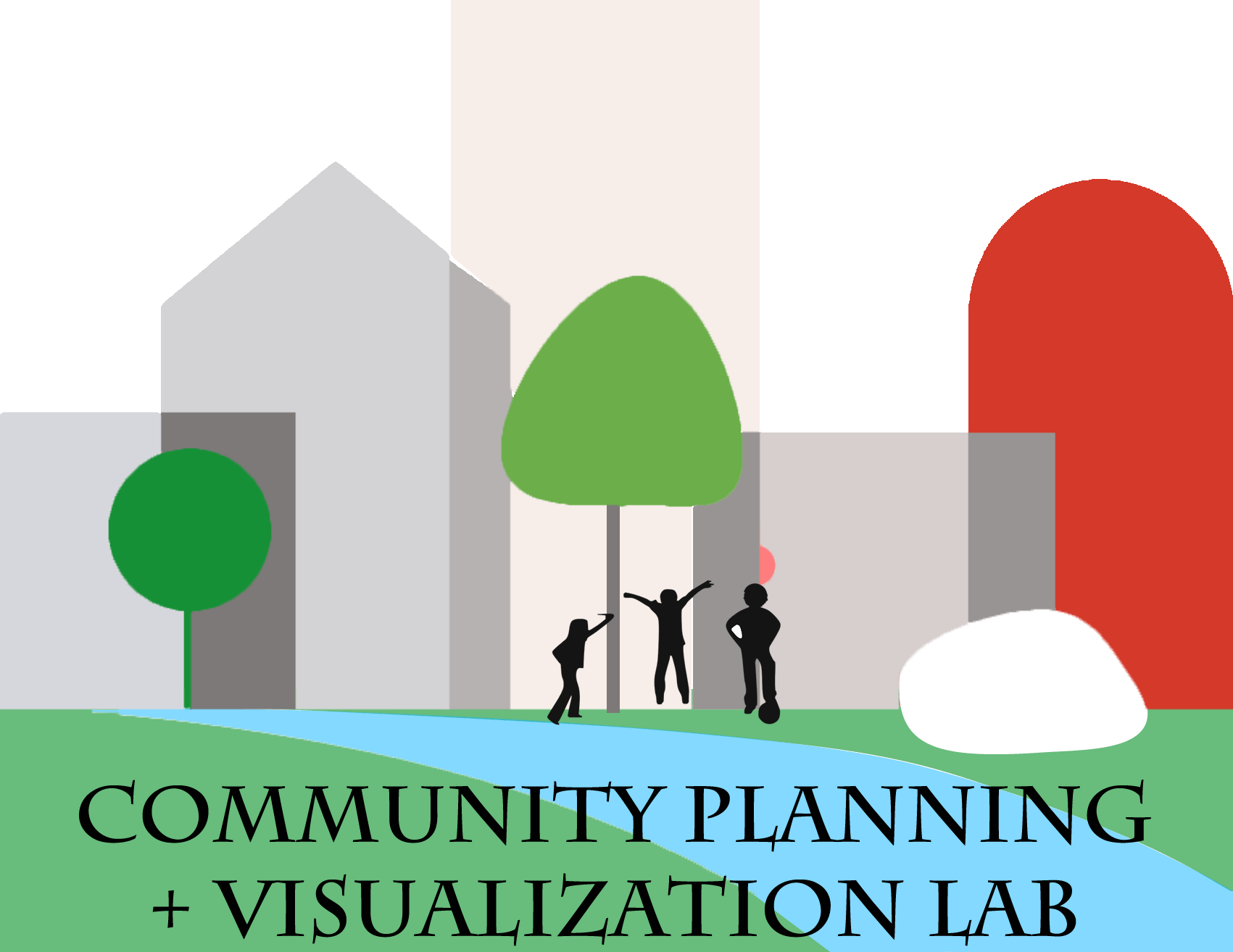
Rowan University Planning Studio 2023
Restorative City Planning: Parks, People, and the Environment









In spring 2023, students from Rowan University undergraduate and graduate Planning Studios, offered in the Department of Geography, Planning, and Sustainability, worked on a project titled "Restorative City Planning: Parks, People, and the Environment" focusing on Camden, NJ. The studio collaborated with Camden-based nonprofits Camden Community Partnership, HopeWorks, and Parkside Business and Community in Partnership, as well as Rowan University Community Planning + Visualization Lab. There were four smaller groups working on specific topics tied to the broader project.
G R A D U A T E S T U D I O
Incorporating Mental Health in Park Planning: A Case for Camden, NJ
The importance of examining the relationship between green spaces and mental health in Camden cannot be overstated. Research has consistently demonstrated the significant positive impacts of access to green spaces on mental health and well-being (Gupta, 2022). These impacts include reduced stress and anxiety, improved mood and cognitive function, and overall enhancement of psychological well-being (Roe & McCay, 2021). Given the limited availability of green spaces in many urban environments, including Camden, it is imperative to understand the impact of this lack of access on the mental health and well-being of the city's residents (Gascon, 2015). Conducting a study to investigate the relationship between green spaces and mental health in Camden is therefore of great significance. This research can contribute to a better understanding of the role that access to green spaces plays in promoting positive mental health outcomes, and inform efforts to improve the quality of life for residents of Camden by increasing access to green spaces and other community resources (Hazer et al., 2015).




Team Members (from left): Joshua Masucci, Jenna Monaghan, Christine Nolan
Research questions
-
What do people feel about parks?
-
What emotions (positive or negative) are attached to parks?
-
How can park design and planning be improved to impact users' mental health and increase their positive feelings about parks?
-
Why and how can we incorporate mental health components in Camden's park planning process?
Research methods/tools
-
Analysis of an online community survey created by CP+V Lab and distributed by CCP
-
Distribution and analysis of a short survey (online + intercept)
-
Facilitation of a focus group, in partnership with PBCIP
-
Content analysis and coding of three focus groups (including two groups jointly organized by CP+V Lab, CCP, HopeWorks, and Dr. Kitson's methods course)
-
Spatial analysis of park-emotion connection using GIS
U N D E R G R A D U A T E S T U D I O Group 1
Mapping access, experience, and emotional hotspots in Camden parks
The purpose of this project is to analyze the condition of parks in Camden, New Jersey to be able to recommend positive changes for park improvement. There are three main goals of this project. Firstly, to understand the condition of parks, such as their accessibility to residents and the quality of experience they provide to park users. Second, to understand the subjective, emotional experience Camden residents associate with the city’s parks. Lastly, to identify which Camden parks need improvement most and the type of improvements needed (such as better amenities, better safety, etc.).





Team Members (from left): Jonathan Hansel, Shahim Kodakkattu, Julia Moseley, Anthony Nobile
Research questions
-
Which Camden residents do not have 10-minute access to parks? (socio-economic characteristics)
-
Which Camden parks offer a better experience to the users? (ranking based on quality and access)
-
Where are the emotional hotspots (positive or negative) in or around parks? (reasons)
-
What recommendations can be drawn based on emotional maps? (policy, program, and design recommendations)
Research methods/tools
-
Participatory GIS to collect data on the emotion-park connection (partner HopeWorks)
-
Walkshed buffer analysis
-
Socioeconomic status (SES) analysis
-
Qualitative ranking of parks based on size, amenities, programs, and maintenance
-
Emotional mapping of ten highly used parks and their access based on data collected from three focus groups and surveys (organized by CP+V Lab, CCP, HopeWorks, and PBCIP)
-
Design solutions to improve the park experience

U N D E R G R A D U A T E S T U D I O Group 2
Connecting park planning with environmental history and justice in Camden, NJ
The purposes of this project are (1) to explore how Camden parks reflect on their environmental history; (2) to review how Camden parks are designed to mitigate stormwater runoff and flooding; (3) to investigate the social and environmental consequences of reutilizing brownfields and environmentally-sensitive lands to parks; (4) to explore how the planning process of Camden parks is connected to environmental and climate justice; and (5) to propose design solutions to enhance user expereince and increase biodiversity in and around Camden parks





Team Members (from left): Aspen Bethea, Gwynna Crawford, Madelyn Palmentieri, Cara Piergiovavnni, Ciara Wenger
Research questions
-
How do Camden parks reflect on their environmental history?
-
How are Camden parks designed to mitigate stormwater runoff and flooding?
-
What are the social and environmental consequences of redeveloping Camden brownfields into parks?
-
How is the planning process of Camden parks connected to environmental and climate justice?
-
What design solutions can we propose to enhance user experience and increase biodiversity in and around Camden parks?
Research methods/tools
-
Information retrieval from historic documents, journals, books, newspapers, and other grey literature
-
Case study research
-
Key informant interviews and transcript analysis
-
Qualitative assessment of the environment in and around parks using Google Satellite Imagery and Google StreetView
-
Design solutions to improve the park experience
U N D E R G R A D U A T E S T U D I O Group 3
Public perceptions of Camden parks: Evidence from social media
Many communities are increasingly using social media data in their plan creation process. Social media data can be an inexpensive way of collecting public opinions and perceptions about certain issues or places although analyzing that data can be challenging and the reliability of the data can be questionable. Still, planners are exploring and utilizing these data sets in their projects and plans. Our goal is to collect social media data from a number of platforms (e.g. Twitter, YouTube, Google, Yelp, Facebook, Foursquare, Reddit, TikTok, and Snap Maps) to determine the public opinion of Camden parks (positive and negative), identify why some parks are more popular than others, explore why some parks have more visitors during the off-season, and understand how social media data can help us create better plans for parks.




Team Members (from left): Robert Chiaravalloti, Joseph Sheldon, Brandon Tracey
Research questions
-
How can we determine the public opinion of Camden parks (positive and negative) based on the posts they have made on social media (e.g. Twitter, YouTube, Google, Yelp, Facebook, Foursquare, and Snap Maps)?
-
Why are some parks more popular on Social Media than others?
-
Which Camden parks do people visit the most during the off-season (winter months)?
-
Informed by social media data, what design solutions can we propose to enhance the user experience of Camden parks?
Research methods/tools
-
Social media data mining
-
Qualitative content analysis of text, images, and videos
-
Word cloud analysis
-
Design solutions to improve the park experience
P H O T O S




















